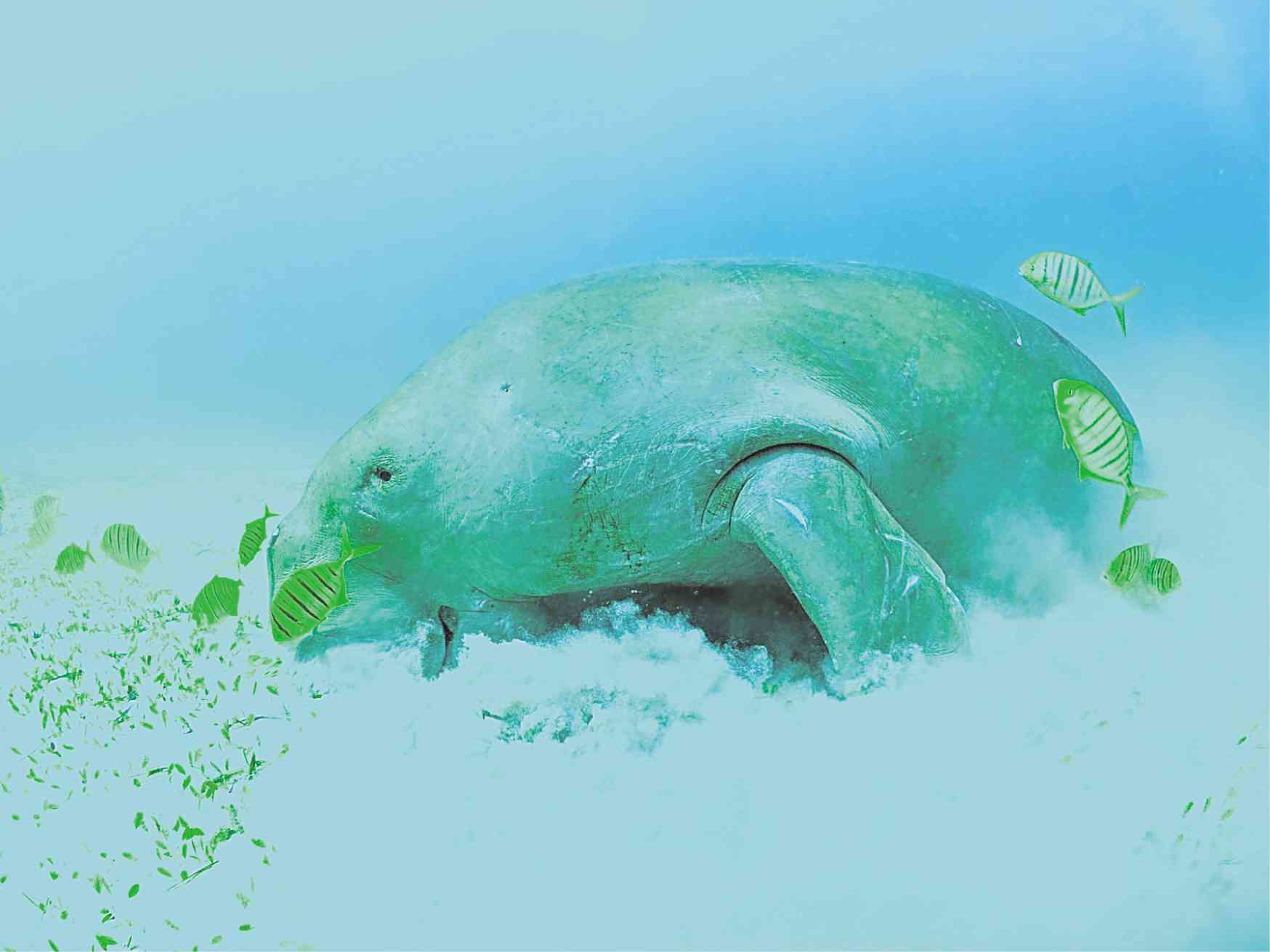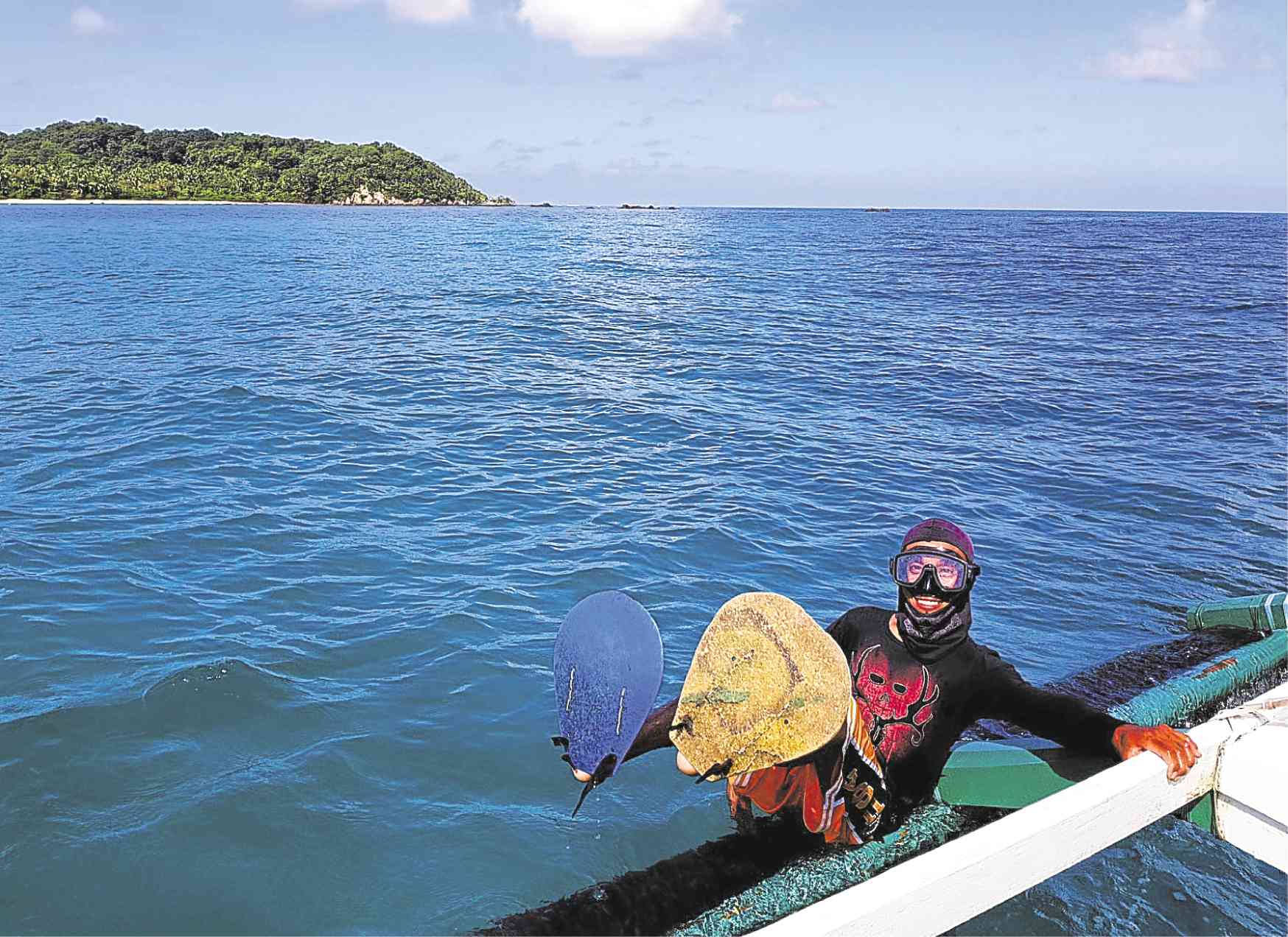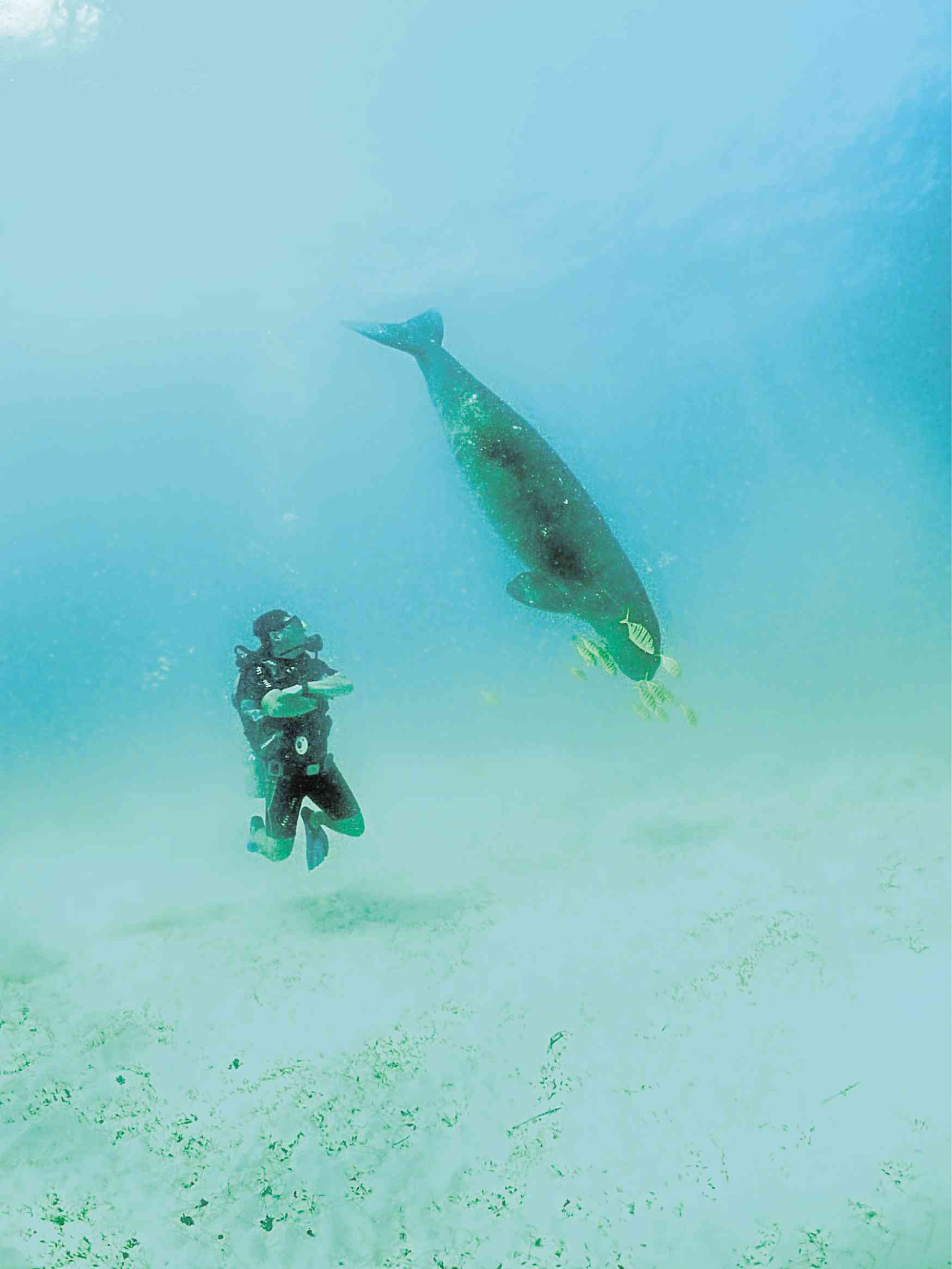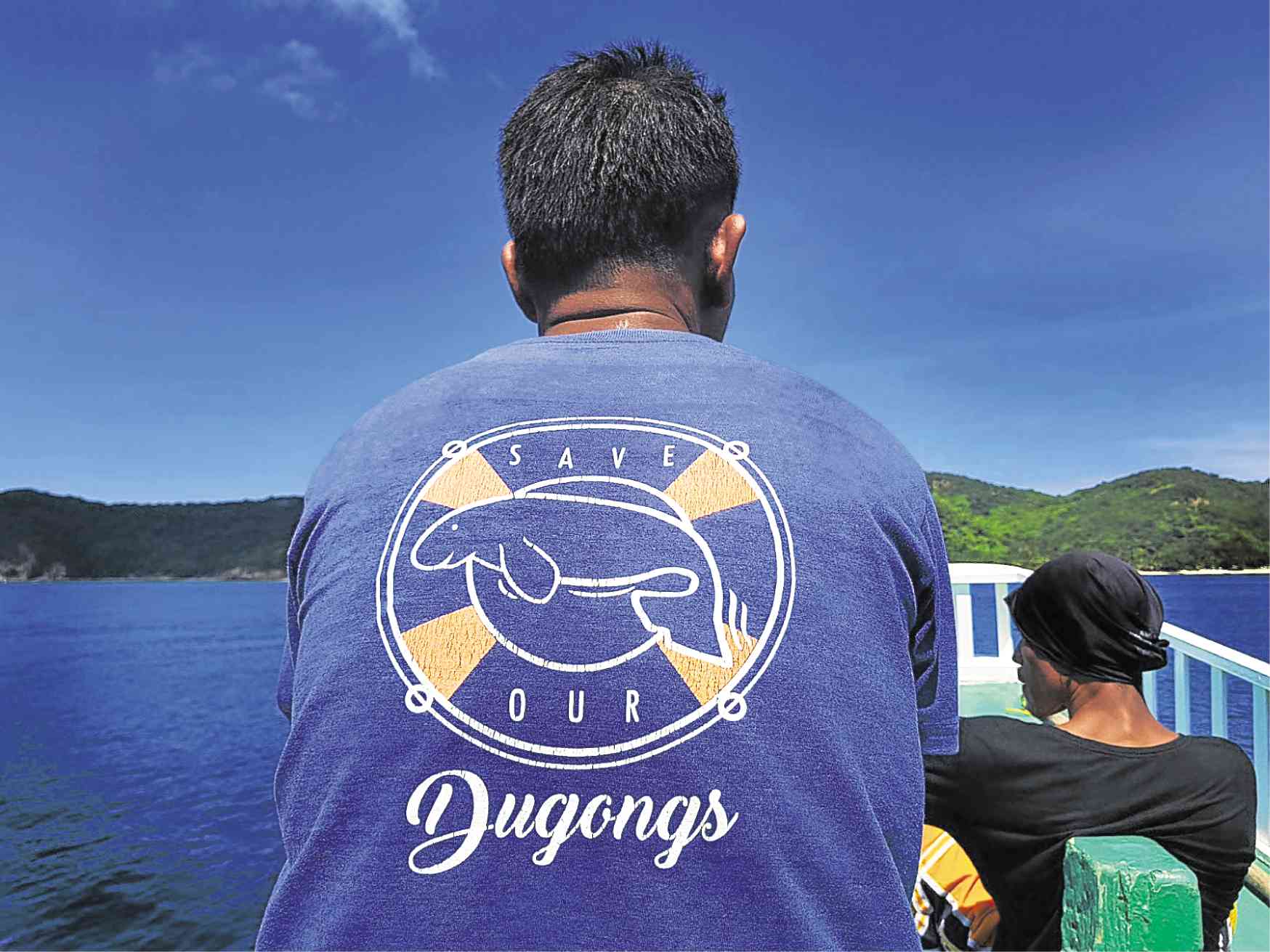How Tagbanua tribesmen protect the ‘mermaids’ of Palawan

RARE AND VULNERABLE Thanks to the conservation efforts of local communities, including Tagbanua tribesmen, a few of the exceptionally rare dugong can still be found in Northern Palawan. —DANNY OCAMPO
Wearing fins from recycled plastic containers, tough Tagbanua tribesmen have become the protectors of the dugong, those gentle marine mammals that have become prey to poachers in Northern Palawan.
The dugong (scientific name: Dugong dugon) is legally protected by Republic Act No. 9147, or the Wildlife Resources Conservation and Protection Act, because aside from being occasionally hunted, the mammals often drown after becoming entangled in fishing nets.
“We’re here to safeguard about 30 dugong,” said Deave, a Tagbanua tribesman enlisted as both spotter and guard against poachers and illegal fishers in the Calamianes Islands in Northern Palawan.
“Our livelihood depends on wildlife so it makes sense to protect them. Protecting [the] dugong safeguards our own future,” he added.
The dugong, or sea cow, which is related to elephants, can grow up to 3 meters in length and weigh up to 400 kilograms. It is the fourth member of the order Sirenia, alongside three manatee species. The dugong has a forked tail while a manatee has a round, paddle-like tail.
Article continues after this advertisement
SAVING THE DUGONG A tribesman shows off makeshift fins from recycled plastic
Wiped out
Article continues after this advertisementA fifth species, the gigantic 8-meter-long Steller’s sea cow, was completely wiped out by 1768, just 30 years after being discovered by scientists.
Dugong comes from the Malay word duyung, meaning “lady of the sea,” which might explain so-called mermaid sightings by sailors in olden times.
Sizable herds of dugong once plied the Philippine archipelago until hunting and habitat loss reduced their number.
Today, the dugong is globally classified as vulnerable, though it is considered critically endangered in the Philippines because of its rarity. Small populations still hold out in Isabela, Mindanao, Guimaras and Palawan, but encounters are extremely rare.
The Calamianes Islands in Northern Palawan remain one of the last areas in the country where the giant marine herbivores can be seen regularly.
Guided by expert divers and Tagbanua tribesmen, Best Alternatives Campaign, a movement to promote good environmental and sustainability practices, recently got a chance to interact with the dugong.
To successfully conserve the dugong, local government units and communities must stamp out poaching, minimize the threat of accidental entanglement in fishing nets, and most importantly, preserve the integrity of seagrass meadows.
Often overshadowed by more colorful and popular marine habitats like coral reefs and mangroves, seagrass meadows are highly productive and provide food for many marine creatures—from rabbitfish (samaral) to sea turtles and the dugong. Unfortunately, many seagrass habitats are being destroyed by reclamation and pollution.

The Halophila seagrass provides food to the dugong. —GREGG YAN AND DANNY OCAMPO
Best caretakers
“We can learn a lot about sustainable use and responsible stewardship from the dugong. The mammal consumes a lot of seagrass yet it leaves the seagrass bed even healthier than before,” said dugong conservationist Dr. Teri Aquino.
“When feeding, [the] dugong helps release micronutrients from the seabed, making nutrients more accessible for small fish. And this is why we always see fish swimming with [the] dugong. This marine mammal living the simplest of lives is one of the best caretakers of our seagrass habitats and the animals that live in them,” Aquino explained.
Through the dedicated efforts of local wardens like Palawan’s Tagbanua tribesmen and by protecting the country’s remaining seagrass meadows, tomorrow’s Pinoys might yet get a chance to swim with real mermaids.

SWIMS WITH THE DUGONG The author with a 3-meter-long bull dugong in Northern Palawan

A Tagbanua tribesman (above) on the lookout for dugong poachers. —DANNY OCAMPO